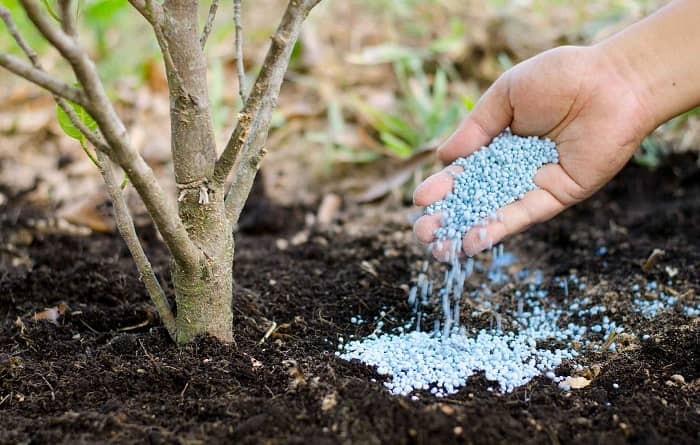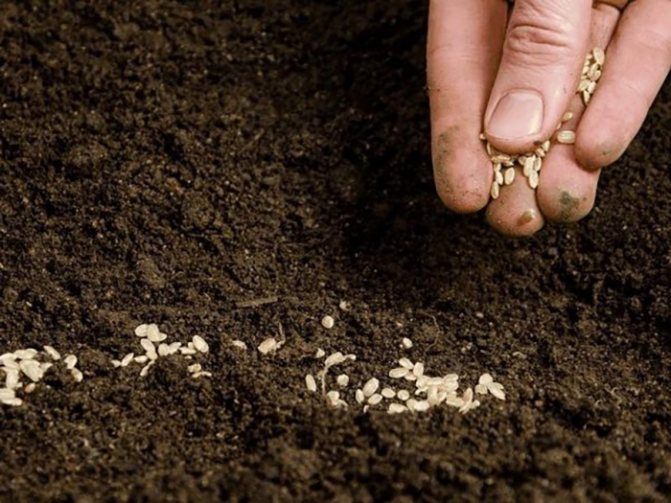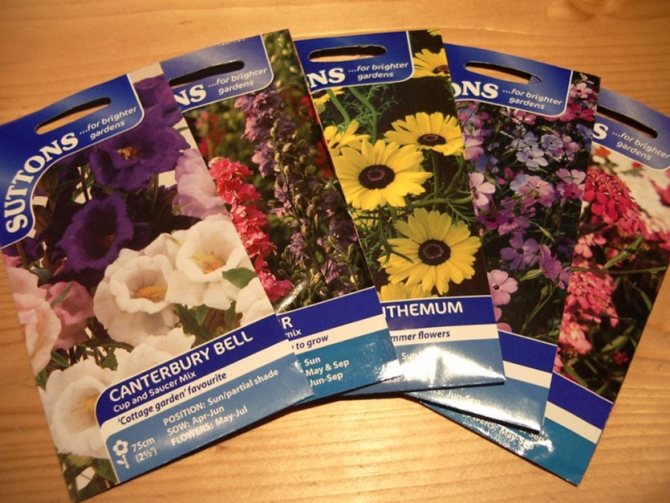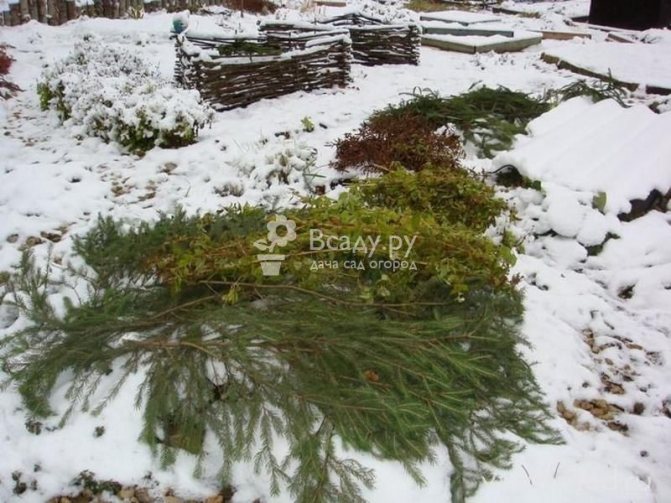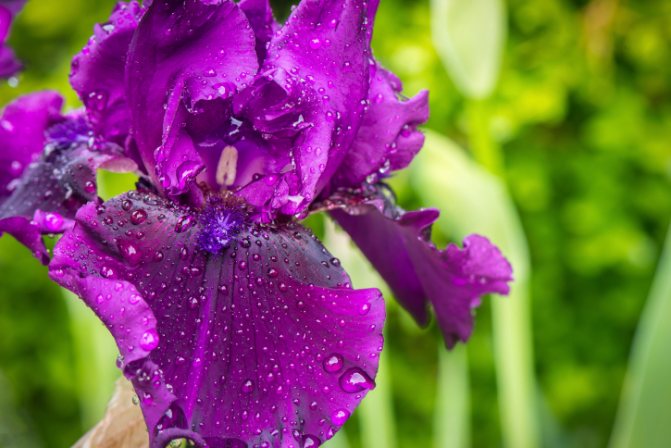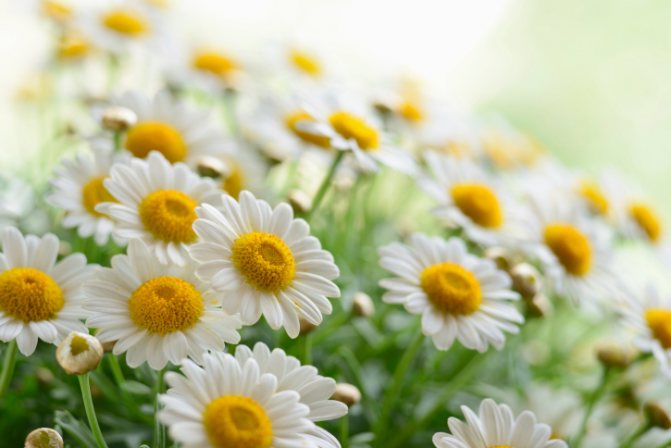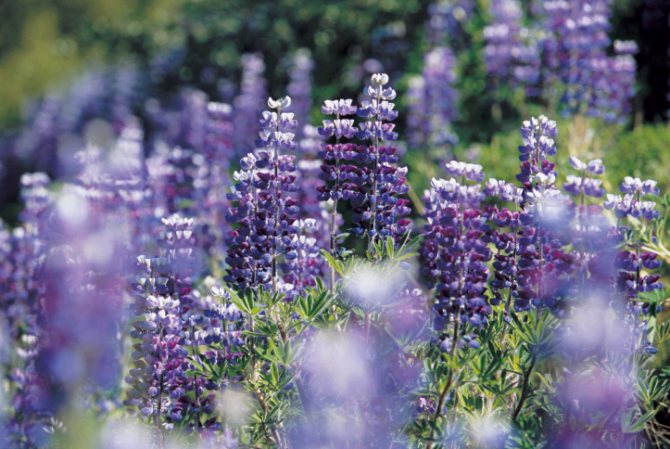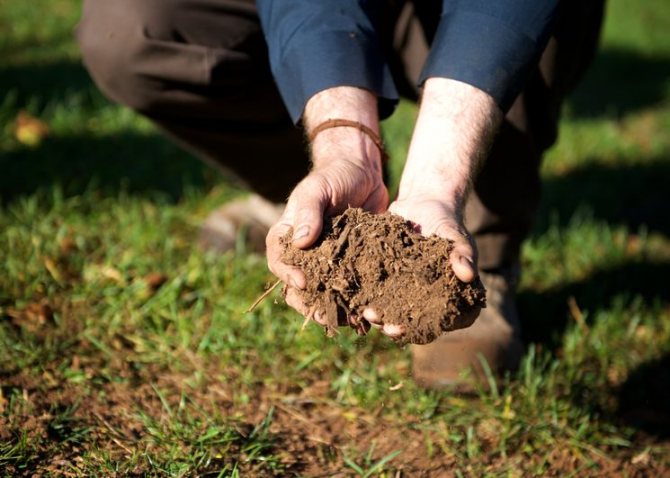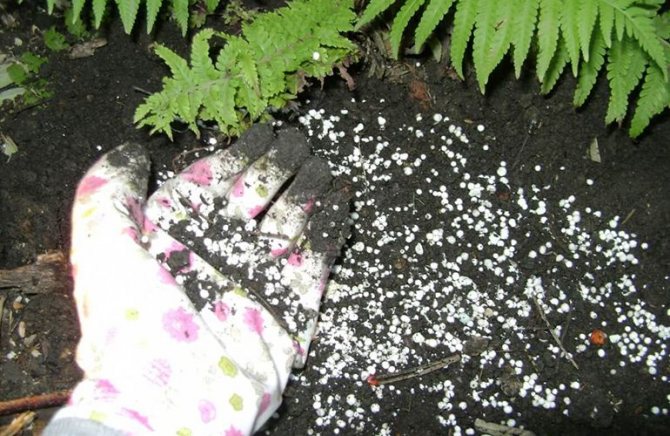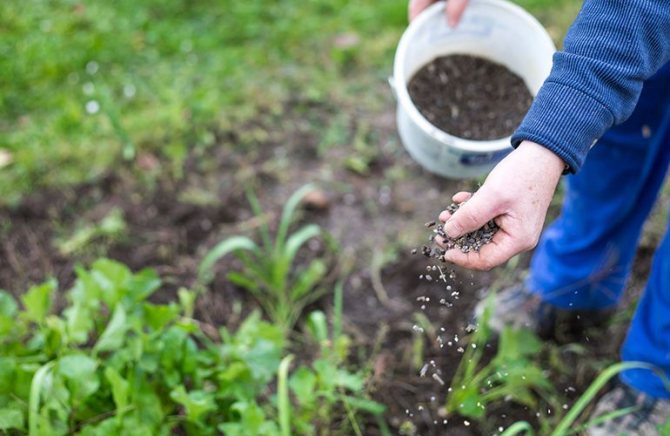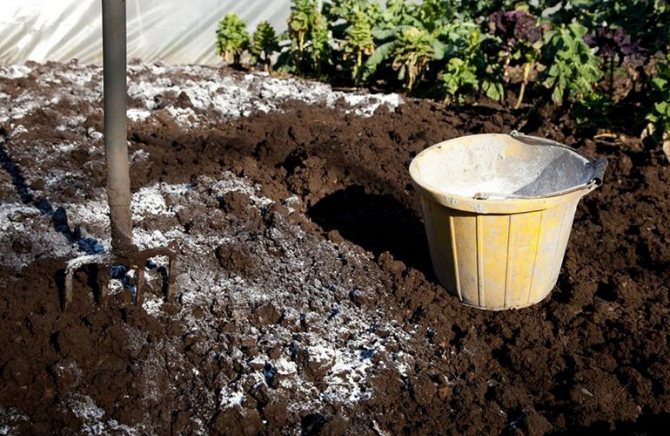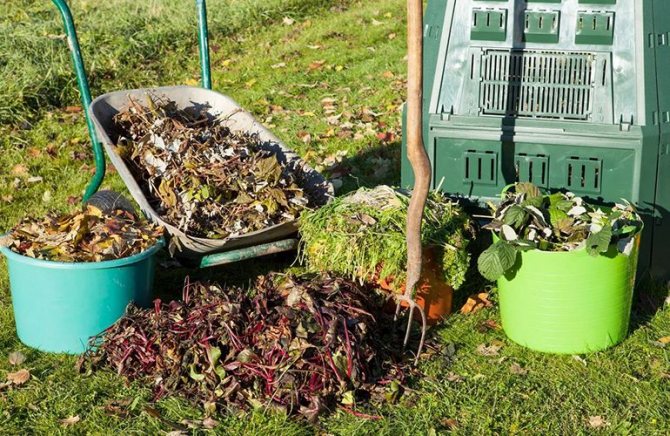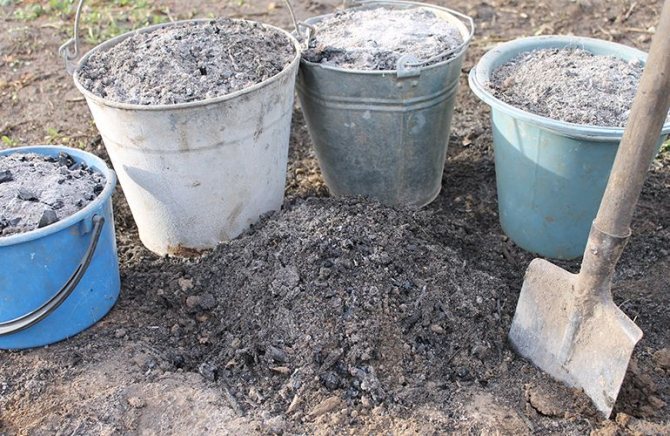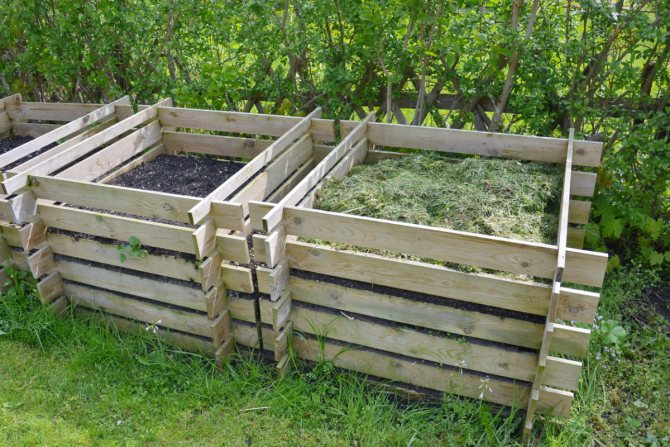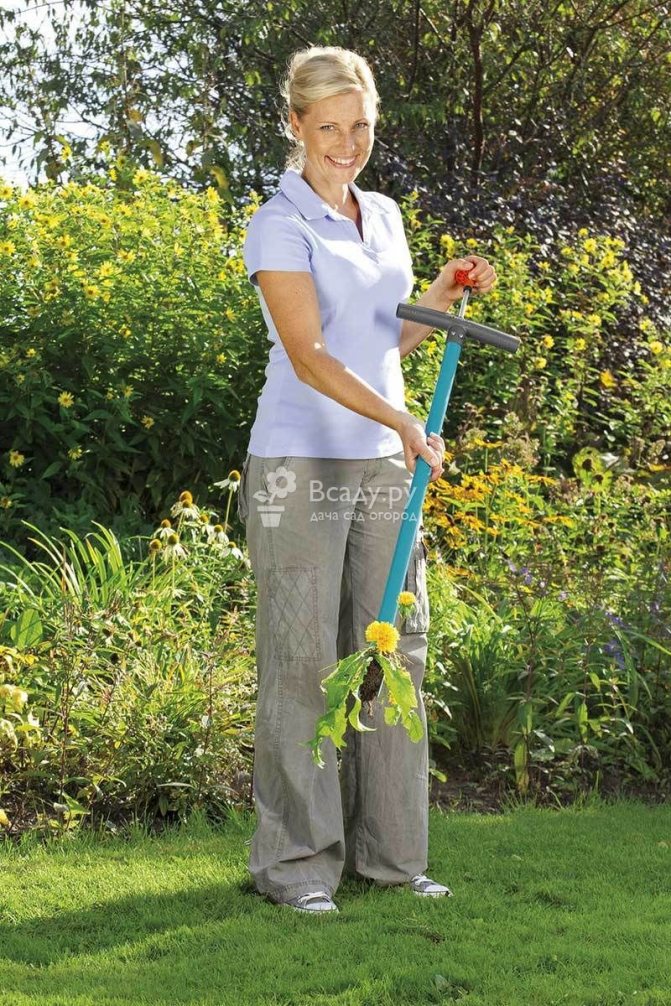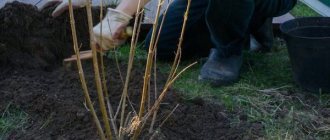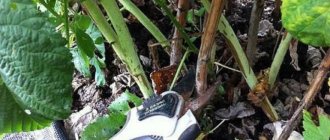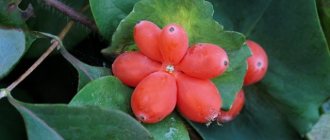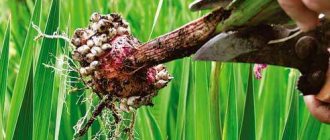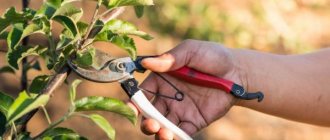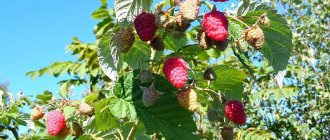Most of us are used to the fact that autumn is the time of year when flowers, trees, and other plants wither. In this regard, many young and inexperienced summer residents throw their flower beds in the fall and leave them until spring in order to breathe life into them during this flourishing season. But with most plants, this conclusion is fundamentally wrong. After all, correct and timely care of flower beds is a guarantee that your brainchild will delight you and bring aesthetic pleasure to those around you next spring. So, all the tips and secrets for caring for flower beds in the fall are further in the article.
Flower beds in autumn, care for flower beds in autumn
How to feed roses in autumn?
At the end of the summer season, it is necessary to carry out two dressing of roses:
- at the end of August - September (immediately after flowering);
- at the end of September - October.
For the autumn feeding of roses, granular fertilizers are best suited, since they come to the roots of the plant gradually, and this is exactly what is needed for the calm preparation of roses for winter. But this does not mean that liquid fertilizers will have to be abandoned - you can use both types of dressings, giving preference to granules if possible.
After fertilization, the soil needs to be watered so that the nutrients can “reach” the plant.
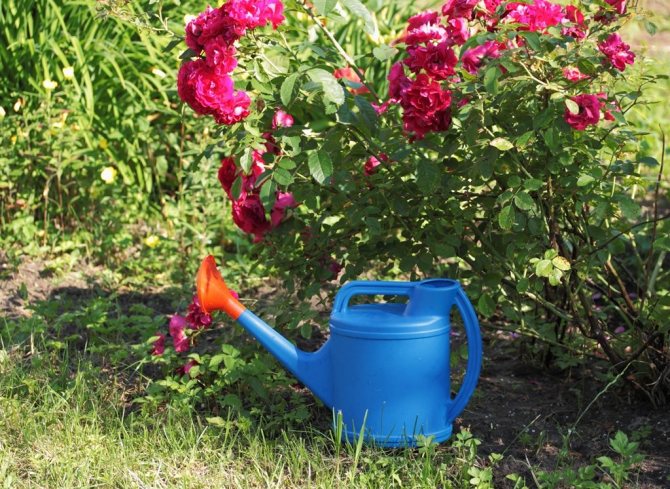
When thinking about how to feed roses in August and September, remember - no nitrogen! This element contributes to an increase in green mass, but in autumn roses do not need it. If nitrogen fertilization is applied at the end of the season, the plant will spend a lot of energy on feeding young shoots, which means it will weaken and it will not have the strength for normal wintering.
First-year roses do not need to be fertilized in the fall if sufficient nutrients have been introduced into the planting pit in the spring.
To the question "How to feed the roses before the shelter for the winter?" the answer is: focus on potassium, phosphorus and magnesium. For foliar feeding (spraying) the following recipes are suitable:
- Dissolve 50 g of superphosphate in 1 liter of hot water, add up to 10 liters;
- dissolve 5 g of superphosphate and potassium monophosphate in 10 liters of water;
- Dissolve 200 g of wood ash in 10 liters of water.
The best time to spray roses is in the evening (before dusk) or on a cloudy day. So you can avoid the appearance of burns on the leaves (due to the scorching sun) or the development of fungal diseases (due to stagnant moisture in the soil).
For root feeding (root watering) prepare fertilizer according to one of the following recipes:
- dissolve 15 g (1 tbsp) of superphosphate and potassium monophosphate in 10 liters of water;
- dissolve 25 g of superphosphate, 10 g of potassium sulfate and 2.5 g of boric acid in 10 liters of water;
- dissolve 10 g of dry yeast and 2 tbsp in 10 liters of warm water. sugar, leave for 2-3 hours and add up to 50 liters.
Feeding roses with ash is effective: it is sprinkled on the soil under the rose bushes. About 3 liters of ash are consumed per 1 square meter. Also, the soil can be covered with compost (4-5 kg per 1 sq. M).
Planting flowers in the fall: advantages and disadvantages
There are several reasons why it is beneficial to plant flowers in the fall:
- more time for arranging flower beds. In the spring, a vegetable garden joins the excavation work, the preparation of fruit trees - there is much less time for flowers;
- seeds or seedlings that survived frosts are stronger, therefore they grow densely in spring and rarely get sick. There is no need to carry out the stratification procedure - it happens naturally;
- in spring the flowers choose their own time to germinate, so there is less risk that they will suffer from spring night frosts. If something did not come up or died, then these were weak specimens, which will surely be hit by the fungus in the near future;
- some seeds are poorly stored at home and lose their germination by spring. It is better to sow such species immediately after collecting the planting material. In spring they will germinate 1 to 3 weeks earlier;
- bulbous crops do not always survive until spring due to improper storage and mold infestation, so it is better to plant them in the fall;
- the cost of seeds and seedlings in the autumn period is lower, since there are many offers from gardeners;
- if the expiration date of the seed material ends, it is better to place it in the ground, otherwise, in the warm conditions of the apartment, they will definitely lose their germination by spring;
- most pests are already hibernating, so nothing will prevent crops from taking root;
- there is no intense heat that interferes with the rooting of plantings, and the autumn rains moisturize the soil well.
In what cases will flowers that are planted in the fall in the country feel bad:
- if the region is northern, the cold sets in quickly, the plants do not have time to take root. In this case, it is better to transfer all gardening work to the spring, when the soil warms up enough;
- the time interval between the end of flowering and planting is not respected - this applies to bulbous crops;
- if the autumn was warm and the seedlings received an incentive to grow. In this case, the plants will not survive the winter, since the aboveground part will die in the freeze.
Perennial plants are especially sensitive to stratification. To get strong seedlings, it is better to sow them in the fall as it happens in nature.
How to feed hydrangea in the fall?
Like roses, nitrogen fertilizing is contraindicated for hydrangeas in autumn. The plant needs to prepare for the dormant period, strengthen the root system in order to overwinter without problems. To do this, it is best to feed the hydrangea in August-September with such a potassium-phosphorus composition: dissolve 1 tablespoon in 10 liters of water. superphosphate and potassium sulfate, and then water the soil under the bush with this solution.
Delicate and spectacular autumn compositions for home decor are obtained from hydrangea inflorescences.
Growers advise mulching the soil around the hydrangea bushes to create a “warm cushion” for the roots. For mulching, compost, peat or manure are suitable. These materials will slowly decompose and penetrate deep into the soil, feeding the plant for several months.
Perennials
We continue to plant dahlias and other perennials.
To accelerate the growth of lateral shoots and lengthen the flowering period by 3-4 weeks, pinch 1 / 3-1 / 4 of the shoots at the budding stage.
In early summer, many bulbous plants begin to turn yellow and wither. Until the nests with babies crumbled, they can be easily removed from the ground. Therefore, no later than the end of June, we dig up the bulbs, dry them, divide them and send them for storage in a well-ventilated room.
In July-August, you can start collecting seeds. If the seeds of certain perennials are of value to you, collect dry seed heads and fruits from dead plants, dry the gutted seeds.
As they bloom, perennials lose their decorative effect. To keep the flower beds in an attractive condition, we promptly remove the faded flowers and inflorescences (we break off the dried stalks at the base), collect dead leaves, drying out and broken shoots.
On cool days, you can do the division of especially decorative perennials, in particular those that stood out with large beautiful flowers.We plant the plots on a prepared, previously watered area.
In late August - early September, we cut heat-loving perennials that we want to preserve until next year, say fuchsia, pelargonium, salvia and others.
How to feed lilies in the fall?
To increase winter hardiness and strengthen the lily bulbs at the end of the summer season, feed the flowers with phosphorus-potassium fertilizer. With the arrival of spring, a "fed" plant will not need much strength to recover, which means that lush flowering will not be long in coming.
Pour over the lilies with such a nutrient solution: dilute 1.5 tbsp in 10 liters of water. potassium magnesium and 2 tbsp. superphosphate. Like other garden flowers, lilies can be covered with compost (10 cm layer) before winter to protect the bulbs from freezing.
The plan of a flower bed in the fall for next year.
In order for your flower garden to look the most profitable and stylish in the spring, gardeners and flower lovers need to draw an approximate flower bed plan for themselves. Yes, yes, you can do this right on paper, just draw a sketch of how you see your future flower bed.
The flower garden can be of absolutely any shape. In order for it to look neat, it is best to choose the correct shapes. The flower bed can be round, square and even in the shape of a rhombus.
The optimal bed width for your flowers should be between half a meter and a meter. It depends on how much space you have. The length of the bed is calculated based on its width (the length should be 4 times the width). Only if this rule is followed will your flowerbed look the most attractive.
On the drawing, it is best to distribute the place of planting flowers in order to see an approximate picture of your future flower garden. It is better to place low-growing plants in the foreground. So you need to get to the highest flowers that will decorate the background of the flower bed. Also, when placing flowers, you should take into account the time of their active flowering. This is done so that the entire flower bed does not bloom with a riot of colors in an instant, and then also fades in an instant. So, for example, tulips and daffodils bloom in May, a little later irises and chamomile begin to bloom, then peonies decorate the flower garden, roses ripen behind them, well, later of all, dahlias, asters, santbrines, which delight us until the coldest days.
In addition to the flowering time of plants, also consider their appearance. It is very important that plants blooming at the same time harmonize and complement each other, completing the appearance of the flower bed. Also, flower beds in the fall can be supplemented with undersized shrubs. You can also make a natural hedge out of them, if you cut the bushes on time and carefully (see photo below). A beautifully designed path will also help to decorate a flower bed. It can be laid out of natural stone and decorated with elements for landscape design: it can be miniature lanterns or various figures that will be matched in the same style.
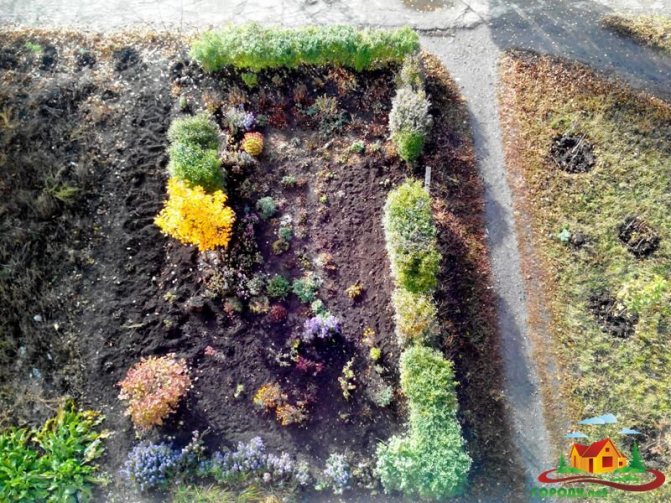

Flowerbeds in the fall, care for flowerbeds in the fall.
How to feed peonies in the fall?
In order for peonies to bloom magnificently, they must be fed during the season.
The end of September - the beginning of October is the time for the final feeding of the peonies. The roots of this plant continue to grow in the fall, so timely application of autumn fertilization is very important. A shallow groove is made around the bush and 10-15 g of potassium and 15-20 g of phosphorus are introduced into it, then they are covered with soil and watered. With the first frosts, peony bushes are mulched with humus or peat.
Conditions for planting flowers and seeds before winter
To get numerous shoots in the spring, you need to follow the rules for planting flowers in the fall:
- Depending on the region, you need to assess the condition of the soil before planting. If it snows but the soil remains soft, plants or seeds can be planted.
- In the fall, when planting flowers - seeds or bulbs - it is better to refuse growth stimulants.Plants during this period are dormant, so they cannot be stimulated.
- Watering the soil in warm weather is necessary for the soil to stick well to the bulbs and seeds. This will protect them from cold air pockets in the soil. Frozen ground should not be watered.
If it is urgently necessary to transplant or propagate ornamental crops in the fall, and the soil is already frozen, you can dig a trench, collect the soil in boxes and send it to a warm room for heating. Then put warm soil on the bottom of the hole, plant bulbs or seeds, sprinkle with the same soil. Important: the roots should not get into frost, otherwise the plant will die.
How to feed clematis, chrysanthemums and iris?
In September, these garden flowers are traditionally fed with mineral fertilizers. Like other plants, clematis, iris and chrysanthemums at the end of the season need to prepare for wintering. Instead of nitrogen fertilizers, a solution of superphosphate and potassium sulfate is introduced under the root (1 tablespoon per 10 liters of water). This will increase resistance to frost, nourish and strengthen the root system, which is especially important in a snowless winter.
Preparing a flower garden for winter, how to care for perennials in the fall
Preparation of perennials and bulbs for wintering in the fall, what to do with annuals, seasonal work in the country, in the garden, the estate.
In October, the last annuals finish flowering, it's time to take up perennial flowers. Do not forget that for many annual flowers, seeds can be harvested as the flowering ends, this can be done up to frost. Having torn off the heads, put them to dry in paper bags, not forgetting to sign the name and grade.
Until the sap flow has completely stopped and the branches are flexible enough, bend the roses down, having previously pruned them. Shelter is made when persistent cold weather is established.
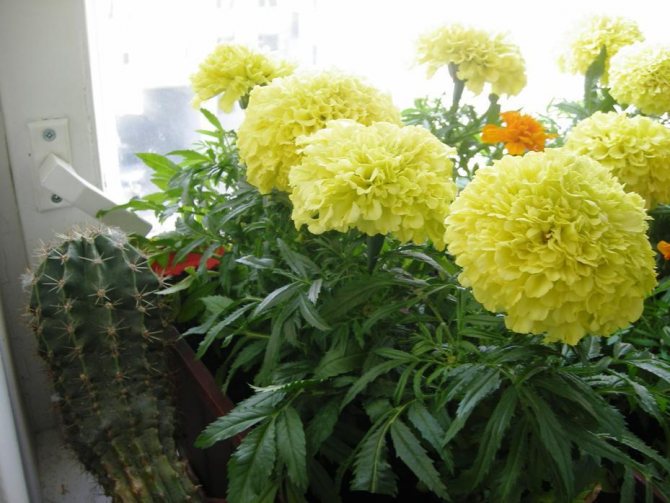

Marigolds in the house
Some of the ornamental plants can be transferred to continue flowering into the house. To do this, they are dug up and immersed in a container of a suitable volume with drainage at the bottom. When transferring, it is better to treat them with a 0.5% solution of Bordeaux liquid or its modern substitute. Keep in mind that in favorable conditions aphids can become active and this must be borne in mind when processing. The continuation of the flowering of the annuals in the house is wonderful, so it is worth putting in some effort.
Phloxes, peonies, irises, delphiniums and other perennials must be cut off, fed, if diseases were observed in the summer, it is also worth spraying with drugs.
Before mid-October, dig up begonias, anemones, cannes, dahlias, galtonias, acindanters, montebrecia, gladioli if they have not already been harvested.
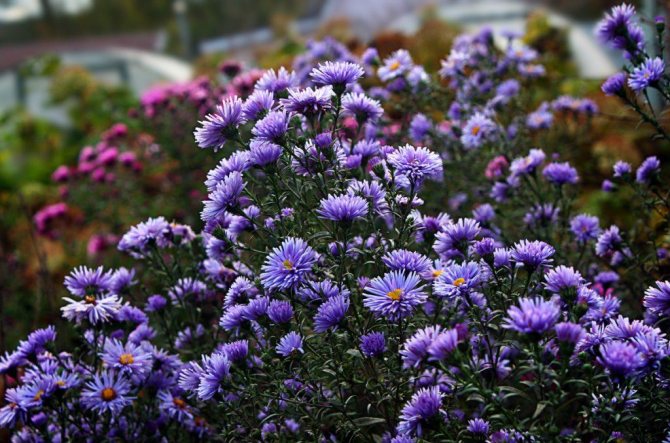

Perennial asters
Perennials can be divided and transplanted until the end of October (for the middle lane). If it is necessary to divide the rhizome, be sure to powder the sections with crushed coal. Keep in mind - late flowering perennials, as well as alpine asters (octobrines), sedum (hare cabbage), chrysanthemums and others, are best replanted in spring.
Mid-October is the last date for planting bulbs. Keep in mind - as a last resort, bulbous can be planted even when frost sets in, if the ground is not completely frozen, but the planting site must be covered with foliage or spruce branches. Shelter material for wintering perennials. must be prepared in advance.
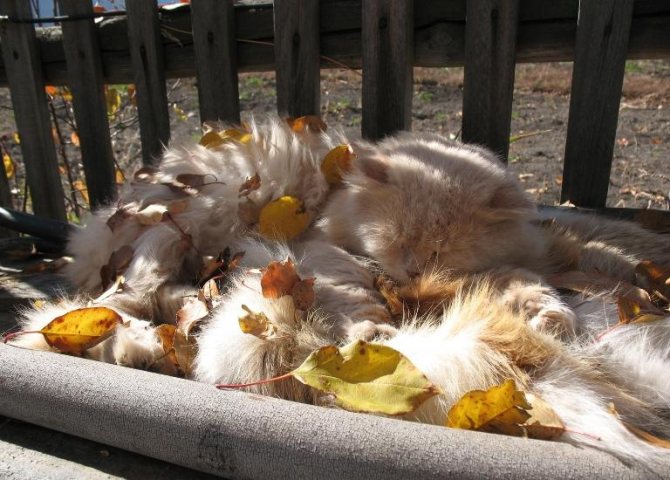

Preparing the material for the shelter
In the central and more northern regions, for better wintering, it is better to cover all bulbous plants with a layer of leaves, peat or spruce branches.
Late autumn is the best time to plan flower beds in the garden for the next year. The main work is over, and the memory of what needs to be changed in the flower garden is still fresh. Be sure to write down everything you have planned in your garden diary. Think about what perennials you can still plant on the site this season, and what in the spring. When selecting, pay attention to the height of the plants, as well as the growth of the bush.
In October, the soil is prepared for the winter sowing of annuals.This is done in the same way as for winter sowing of vegetables. If there is no sand or peat, do not forget to leave some earth warm for dusting the seeds, since the seeds are sown with the onset of frost.
Folk omens for the weather from October 21 to 27
Cropping flowers
Remember to remove wilted flowers, dried stalks and dead leaves from flowering perennials to keep them looking attractive until they wither. If the entire plant has dried up, cut it off entirely, leaving only a five centimeter stump. In irises and peonies, if you are not going to transplant them, all the stems are cut in this way, the remains of the bushes are sprayed with a 1% solution of Bordeaux liquid.
After flowering, phloxes are also cut off almost to ground level, and the hemp is sprinkled with ash. On roses in the second half of September, it is customary to cut the buds, since they are unlikely to have time to bloom, but they can take away the nutrients necessary for wintering from the bush. Do not cut flowers with a long stem from rose bushes, as this will provoke the growth of a new shoot, and it is unlikely to have time to ripen before winter, so the plant will waste energy and nutrition on its growth.
How to care for garden flowers in October
How to loosen the soil?
Loosening the soil is another important step in flower care. Land cultivation under flowers and flower beds is necessary for several purposes:
- Getting rid of weeds.
- Increase the exchange of air in the upper part of the soil.
- Conservation of moisture in the ground.
Without regular maintenance and loosening, a hard crust forms on the ground, which accelerates the process of moisture evaporation. Result? Less moisture remains for the roots. The presence of a crust also negatively affects the access of oxygen to the roots. They start to "choke".
If flowers are already planted in the garden, then shallow loosening of the surface layer is practiced. It aims to break up the crust. In spring, the soil must be loosened to a depth of 10 cm, in summer - no more than 6 cm (with deeper loosening there is a risk of drying out the soil). The frequency of loosening depends on the properties of the soil: heavy and dense soil is cultivated more often than light soil.
The importance of loosening when caring for flowers is evidenced by the observations made by our specialists: one loosening done on time can replace two waterings (it has such a positive effect on maintaining soil moisture).
With your own hands
In addition to store-bought preparations and organics, experienced florists use improvised fertilizing. Such fertilizers are prepared independently and contain a maximum of vitamins.
- Baker's yeast. In 1000 ml of warm water, 40 g of yeast is insisted. This top dressing should be applied in a very strong dilution (the optimal concentration is 1%). Due to the abundance of B-vitamins and cytokinins, perennials noticeably revive and start growing.
- Wheat leaven. Wheat grains are soaked for 24 hours, then add a large spoonful of flour and sand. Bring to a creamy state, cook over low heat (with constant stirring) for 25 minutes. Then they cool, cover with gauze and leave warm for souring. After the infusion begins to bubble, the fertilizer is ready for use. The dosage is a tablespoon per 1000 ml of water. Such feeding not only supplies vitamins, but also prevents the development of pathogenic microflora in the soil.
- Succinic acid. One tablet is diluted in 1000 ml of water. The solution is used for watering and simultaneous feeding. Being a powerful growth stimulant, succinic acid is able to revive severely depleted and dying perennials. The frequency of application is once every 5 years.
Organic fertilizers for application in the fall
Organic fertilizers that can be applied to the soil in the fall include:
- Manure.
- Chicken droppings.
- Compost.
- Ash.
- Peat.
- Sawdust.
- Siderata.
You may be interested in: Processing currants in the fall from pests and diseases
Professional gardeners and gardeners always have these substances in stock, because they all have useful properties.
Chicken droppings and manure
For a long time, droppings, manure have been considered indispensable when working in a summer cottage, they increase soil fertility. There are certain rules for the introduction of organic matter, you need to observe the timing of fertilization, remember that fresh manure cannot be applied under the plants, the roots of the seedling may suffer.
But in the fall, you can feed the soil with fresh manure. After spreading over the area, you must immediately dig up the area. The depth should be between 10 and 18 centimeters. The lighter the soil, the deeper they dig. It is not worth deepening fertilizers deeper than 18 centimeters, it will be difficult for the plant to obtain nutrients. Perennial vegetables, sweet peppers, cucumbers, late cabbage, and various types of greens are most well accepted by this top dressing. Organic fertilizers are applied once for several years. About 300 kg of manure is applied per one hundred square meters of land.


Ash
The ash contains a large amount of useful trace elements that are necessary for the growth of seedlings. The most effective is the ash left over from burning weeds, potato tops, branches. This ash is brought in in the fall, the regularity is once every four years. Cabbage, strawberries, potatoes, bushes are especially fond of ash feeding. About a kilogram of organic matter will be required per square meter of land.
Compost
The compost can be used for autumn feeding, as well as mulch when sheltering wintering plants. The layer of raw compost for the shelter should be at least 7 cm. You just need to make sure that the humus does not dry out, otherwise all soil microorganisms will not receive the necessary microorganisms for the life of plants.
Most of all, compost is loved by crops of the Solanaceae family. These are cauliflower, onions, root vegetables. The compost must be aged for at least two years until it is fully cooked. Some gardeners do not survive this period. When using raw compost, remember that you only need to add it to the soil in the fall. It is laid out on loose, weed-free soil, using a rake or a hoe, embedded in the ground by 10-13 centimeters. Organic matter will be required (about 4 kg / sq. Meter). Legumes and medicinal plants, greens and roots do not like raw humus.
Peat
Peat in its pure form is not brought in for digging, but it is the main component of the compost. There is very little organic matter in low-lying peat, there are many useful components. High peat contains a lot of organic substances, but there are few nutrients in it, it has an acidic reaction. That is why it is irrational to use peat as a fertilizer on the site.
Sawdust
Sawdust does not represent nutritional value for plants. They are added when digging the soil to loosen it and retain fluid. The sawdust turns into humus, a favorite of soil fungi and worms.
You may be interested in: Instructions: Zircon fertilizer, tips for use
Siderata
Siderata are called plants that are planted in order to improve the condition of the soil. It is the cheapest soil regeneration product and contains the nitrogen needed by plants. At the end of summer, green manures are sown on the beds that were freed up after collecting some crops: clover, oats, mustard, legumes, rye. They are considered the best. During the plowing of the garden, in the fall, green manure is simply buried in the ground.
Liming to reduce acidity
What fertilizers are applied in the fall also depends on the acidity of the soil. Check the soil for acidity you can use table vinegar:
- Take a handful of earth.
- Pour some vinegar and see if the soil sizzles or not. If it fizzes and bubbles, then the amount of alkaline elements is normal. If not, additional liming is required.
Dolomite flour, chalk or lime are used to lower the acidity.


If you fertilize the soil with these substances in the fall, then it is better to transfer mineral fertilizing to the spring. In an alkaline environment, fertilizers dissolve worse. Moreover, phosphorus becomes insoluble and cannot be absorbed by plants. Superphosphate has an alkaline reaction and a weakly acidic medium is required to dissolve it. In alkaline superphosphate does not work.
Liming is not used together with ash, since ash itself contains calcium, which ensures a normal level of acidity for the absorption of nutrients.
We plant bulbous
Tulips, daffodils, crocuses, muscari, imperial hazel grouses, decorative bows and other bulbous flowers are planted in the middle lane in September and early October. But it is better to plant hyacinths a little later - in the second half of October. Before planting, the bulbs must be pickled using a weak solution of potassium permanganate or special means "Maxim" or "Vitaros".
For good development of plants and subsequent flowering of bulbous plants, nutritious soil is necessary. When preparing the soil for planting for digging, a complex mineral fertilizer is added.
The depth of the hole depends on the size of the bulb and is determined by the “rule of three” - from the bottom of the bulb to the surface of the soil there should be a distance equal to the size of the bulb, multiplied by three.
A little river sand is poured at the bottom of the hole - this will save the bulbs from rotting. If planting is carried out in dry weather, then the planted bulbs must be watered.
For plants to bloom again
Many plants have the ability to bloom twice a season if properly cared for. To please yourself with beautiful buds again, you need to cut the flowers after the first flowering, as well as provide them with fertilizer and compost.


GARDENA Double-edged secateurs B / S
The GARDENA double-edged secateurs B / S with a maximum cutting diameter of 20 mm help you to neatly trim flowers, young shoots and green branches. Its lower blade is made of stainless steel and its handles are made of fiberglass-reinforced plastic for added durability.
Fertilizing lawns
In the fall, you need to use special groundbaits for lawns. The most popular are the following tukas:
- “Fertika is lawn. Fall"... Recommended for use in September. Consumption - 250 g per 10 m².
- Bona Forte. Submit at the end of August. The norm is 150 g per 10 m².
- Terrasol + Autumn. Despite the fact that it does not belong to the category of specialized lawn fertilizers, it has a positive effect on the soil. Top dressing has a beneficial effect on the root system and promotes even grass growth in spring.
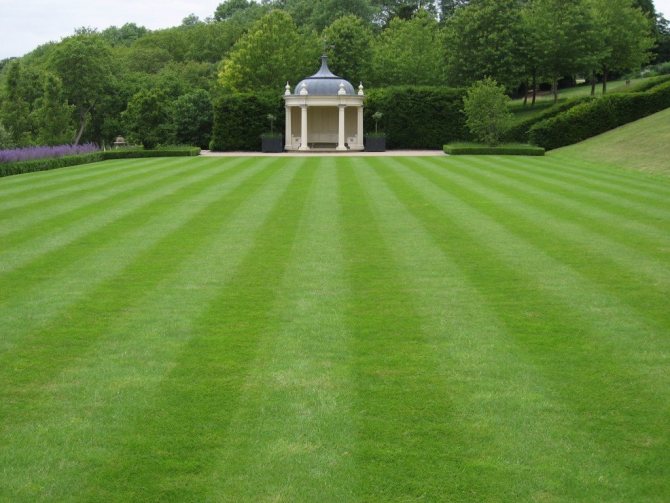

Prepare your lawn for winter.
Fertilizer prices Bona forte
bona forte
Severe frosts, typical for most of the territory of the Russian Federation, cause serious damage to horticultural crops. To prevent freezing of plants, you should enrich the soil of your garden and garden in the fall. In addition, top dressing improves the structure and disinfects the soil.
Preparing roses for shelter
Some varieties of roses bloom until the very frost, but you still need to prepare for winter. There is no consensus among gardeners whether roses need autumn pruning. Probably, in areas with a warm climate, this procedure can be avoided, but in most of our country, roses have to be covered for the winter, and with large bushes this is problematic.
Therefore, before the onset of frost, shoots are shortened in bush roses. Climbing roses are removed from the trellises, placed on boards and gently pressed. Roses are covered after frost. If the leaves have not fallen by this time, they are harvested by hand.
Gardeners use different methods of insulating roses, but the best results are obtained with a "dry" shelter. There is nothing complicated here - a frame is being built over the bush, which is covered with a dense covering material in two layers, on top of the structure is covered with a dense polyethylene film.
Above the climbing roses, the frame is erected in the form of a tunnel. Using this method of shelter, it is important to ensure that the polyethylene is not laid tightly - it is necessary to leave a hole for ventilation.
Tips and tricks from experienced gardeners and gardeners
A variety of fertilizer mixtures, substances and complexes makes many gardeners make the wrong decision or wonder what to use.
Experienced gardeners advise avoiding lengthy reflections, and use the tips:
- Plant residues are used 50/50. Some are burned for ash, and some are dug up to return nutrients that are in the tops and foliage.
- It is customary to remove fallen leaves, but fruit tree litter is an excellent protection from the cold and a top dressing for spring loosening. Infected, damaged leaves are removed.
- If trees and shrubs are treated, then the introduction will be more beneficial in the near-stem circle (crown projection).
- Always follow the rule: Fertilizers work best if you use both dry and liquid form at the same time.
The last advice, from which one cannot deviate, concerns mineral dressings, organics and all types of fertilizers: apply strictly according to the indicated doses. Less is better, but more reliable than more and more harmful to plants.
Flower beds with annual flowers
Annual plants are removed from the flower garden as they die off. Plant residues can be infected with fungal and viral diseases, so they are taken out of the site and burned.
The exception is faded marigolds. They can be laid in a compost pit, buried in vegetable beds, and covered with strawberries or tulips.
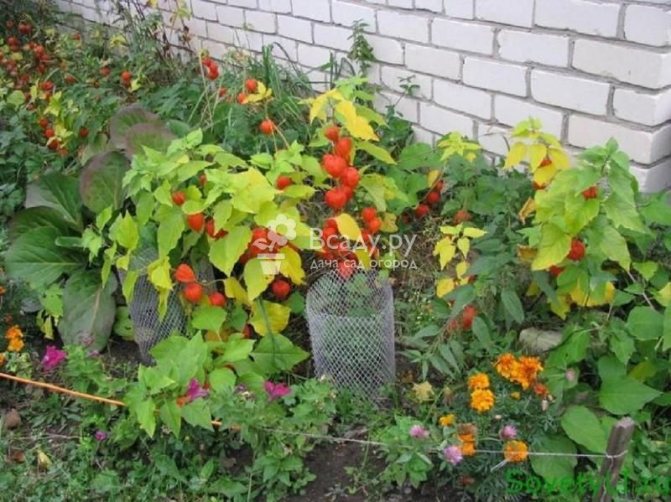

Autumn work in the flower garden
To collect seed, several annuals are left on the site until the seeds are fully ripe. Then they are removed from the flower garden.
Having freed the flower garden from the annuals, the soil is watered with Fitosporin or 1% solution of potassium permanganate. Organic and mineral fertilizers (humus, compost, superphosphate), as well as lime or dolomite flour (if necessary to reduce acidity) are introduced, after which the soil is dug up.
How to apply top dressing
Fertilization methods in the fall:
- Differentiated fertilization allows you to fertilize specific areas before plowing the soil. After harvesting, fertilizers are spread evenly over the ground. Then they dig it up.
- Fertilizers are applied to the holes when planting plantings before winter, or when transplanting them. In this case, the planting hole is made deeper so that all the roots fit well. Fertilizers are mixed with the soil, this mixture is poured into the pit. On top of the fertilized mixture, you need to pour soil in order to get rid of the contact of the root system with fertilizers.
What fertilizing for what crops are needed in the fall
The most popular crops in the country are potatoes, tomatoes, cucumbers. How to fertilize the land to make up for the lack of nutrients for the future harvest? The needs of each culture must be considered.
For example, potatoes and tomatoes like a compound fertilizer that contains a large amount of nitrogen. But since nitrogen in mineral form does not last long in the soil, green manure will be the best for these plants. Plant residues take longer to decompose and by the beginning of the growing season they will completely pass into a form that is convenient for assimilation by the roots.
Preparing the land for winter with the help of green manure is carried out in several ways:
- with digging;
- without digging.
The second option is easier in terms of labor costs and benefits for the soil. Although few gardeners know that microorganisms living in different layers are of great importance for the quality of the soil. Moving them from their place is fraught with death.
When digging, there is an exchange of layers and microorganisms that do not survive in new conditions. Because of this, organics are processed less efficiently.EM preparations are used to replenish the amount of soil bacteria, thereby accelerating the decomposition of plant residues. If you water the mulch under the berry bushes with such a solution, by the spring all organic matter will completely dissolve and go into the soil.
Cucumbers and tomatoes love potassium, so potash fertilizers are required for digging in the fall. If you do not replenish the amount of potassium, the yield in this garden will be small.
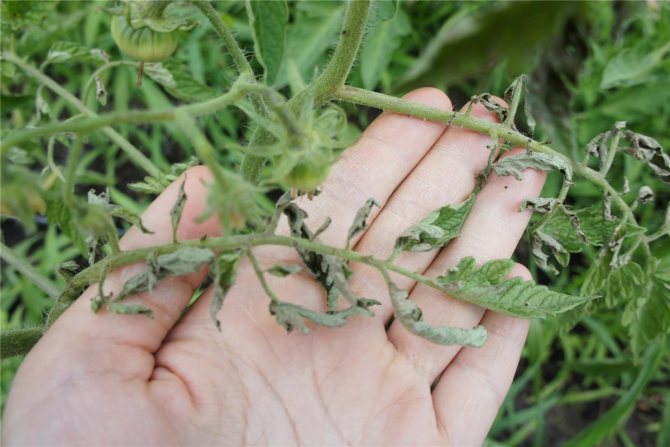

All plants need phosphorus, especially potatoes. Phosphate fertilizing creates favorable conditions for the growth of the root system. The root is responsible for the assimilation of all other substances - nitrogen and potassium. When busting with nitrogen fertilizers, but with a lack of phosphorus, the plant will be weak and will not be able to grow green mass. This will affect flowering and fruiting - it will be scarce. With a lack of nutrients, vegetable crops shed flower stalks.
The benefits of indoor plants for humans
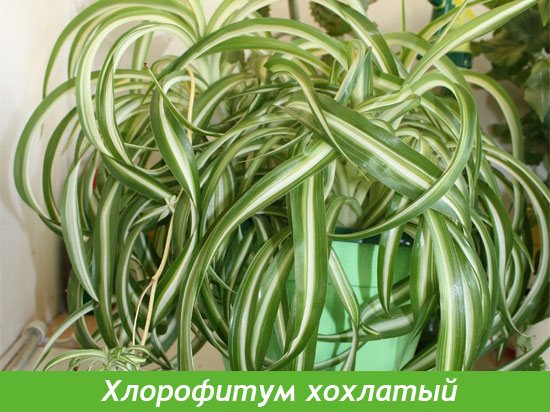

All indoor plants emit oxygen, humidify the air of our homes, and have a bactericidal effect. For example, after 3 weeks of staying in the room of a Chinese rose, sansevier, laurel or lemon, it is almost completely cleared of most pathogenic microbes.
Air purity in any apartment is also far from the desired one. Modern paints and varnishes of furniture, rugs, various synthetic products significantly pollute the surrounding air with their vapors. When using natural gas, large amounts of carbon monoxide and nitrogen dioxide are emitted during cooking. Tobacco smoke also contributes to air pollution. All this makes one think about air purification in apartments, especially in the winter months, when in order to preserve heat, living quarters are practically deprived of natural air exchange.
The true record holder among "natural filters" is Crested Chlorophytum - a native of South Africa. It has been experimentally proven that if you place 5-6 such plants in a room, then the purity of the air in it will approach the air of a hospital operating room.
Taking care of your indoor plants in the fall can be a little more difficult than other times, but it's worth it!
Do I need to fertilize phlox
To increase the lifespan and improve the quality of the flower, you need to know about the rules for caring for it. The main secret, thanks to which the buds will be large, and their flowering for a long time, is the fertilization of the soil. Phlox growth begins early, the first time it is advisable to feed them in the spring, until all the snow has melted. The next top dressing is in late May - early June. Then meals are produced in the first and last week of July. Cultivars that bloom late should be additionally fed at the end of summer. The last time phloxes are fertilized in the fall before winter.
Comment! During the period when the kidneys appear, phlox feeding is carried out every week.
Organic as an affordable and safe processing option
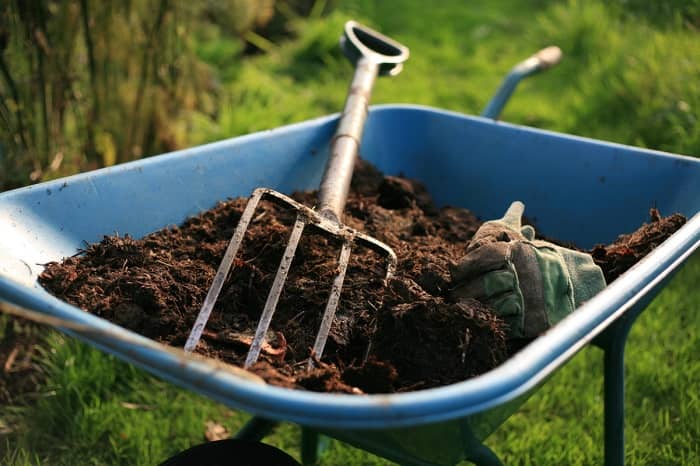

Poultry droppings and chicken manure increase soil fertility, but they are used only before winter (for digging) and are introduced at intervals of 1 every 3 years. If you use fresh manure to fertilize your plants, you can burn the roots. During the winter, the concentration of substances in the soil will become optimal, and the earth will be saturated with useful elements.
Compost is made by long-term fermentation of biological waste. Some farmers call it “black gold”. Correctly prepared compost placed in the soil on time will increase the fertility of the soil.
Peat is distinguished into lowland and high-moor peat. The latter acidifies the soil, has little effect on fertility. The second is characterized by a slightly acidic reaction, it has a good effect on the composition of the soil. It is advisable to add peat at the same time as compost during mulching plantings in the spring.
Wood ash is the most readily available product if someone has a stove. Ash can be prepared by burning the weeds, branches and twigs of fruit trees after pruning.It is important to take into account that an excess of ash reduces the acidity of the soil and suppresses the effectiveness of nitrogen fertilizers. Therefore, before use, it is advisable to determine the level of acidity of the soil, use ash once every 4 years for digging.
Shavings, sawdust, chopped bark and grass will retain moisture in the sandy soil. Once the organic debris has been crushed and turned into humus, it will provide a breeding ground for worms, microorganisms, fungi and plants.
To reduce the cost of fertilizing in the fall, many use a grass cut from weeds and tops of vegetables (except for nightshades). The greens are finely chopped, placed in the furrows in a layer of 5–7 cm, covered with a thin layer of earth and a second layer is laid. It remains to completely cover the fertilizer with soil so that it has time to overheat naturally until spring.
Green manure is a useful and environmentally friendly fertilizer. These are cereals - clover, vetch, oats, alfalfa, etc. Siderata not only fertilize, but also cleanse the soil. They are sown by the end of summer, watered well, and after growing up to 15 cm, they simply mow and dig up the plot.
How to deal with weeds?
Weed control is getting rid of “competitors” that take microelements and water from the roots of flowers. Today, gardeners are armed with several ways to deal with them: mechanical, chemical and biological:
- The first involves loosening, plowing with a pitchfork or shovel.
- The second is the use of special ready-made formulations purchased in the store.
- The third is covering the soil with a material that does not allow light to pass through. Under it, weeds die naturally.
The use of the chemical method is controversial, since it has not been proven whether it affects only weeds or worsens the condition of flower crops.
Urea (urea)
The form of nitrogen in urea is amide, so the mineral stays in the soil longer and does not undergo leaching. The action of ordinary nitrogen is short-term, it quickly disappears and in the fall will give unnecessary growth of shoots.
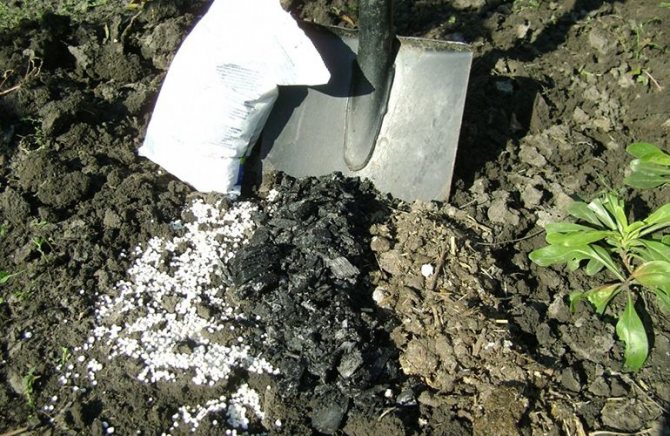

How to apply:
- when digging, add urea and a mixture (100 g of lime + 1 kg of superphosphate) in a 2: 1 ratio, spending 130-150 g per 1 m²;
- in 40 liters of manure add urea (50 g), simple superphosphate (30 g) and evenly distribute under the crown of medium-sized fruit trees.
Nitrophoska, potassium magnesium
Top dressing with nitrogen, potassium, phosphorus increases the yield by 20%, and they are contained in equal proportions in nitrophosphate. Consumption per 1 m² is from 70 to 80 g. It is convenient to apply in the process of digging, pour into the hole - quickly washed out nitrogen will last longer.
Kalimagnesia, with potassium, magnesium, sulfur in its composition, is effective on clay soils in autumn (40 g / m²), and in spring - on sandy soils.
Examples of combined autumn fertilizers:
- humates - a natural organic preparation made from compost, humus, sapropel, brown coal, silt, enriches the land in the garden, vegetable garden;
- Berry, Tulip, Record-3 - effective for fruit and berry bushes;
- Biud (based on poultry manure, horse and cow manure, processed using a special technology) - enriches poor lands;
- Piksa Lux, Piksa Premium (bioorganic supercompost) - fertilize with an interval of four years;
- Agrovitaqua is a complex of trace elements, the interval between dressings is at least three years.




